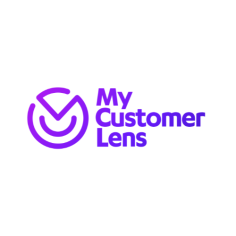- Ask your clients more relevant questions
- Get more insightful responses back from clients
- Get short surveys
- Increase your client survey response rates
- See the full picture of client experiences
How to increase client survey response rates according to MyCustomerLens
I’m often asked what we do to help increase survey response rates. The answer is that we help firms do three things differently. This post covers the what, why and when of increasing client response rates. But these three tactics only work if you accept a simple truth. Your client experience surveys are part of your client’s experience!
Houston, we have a (survey) problem
Is your main client survey getting fewer responses than in the past?
Are clients commenting that the survey seems to get longer each year?
Does it take more than 5 minutes to complete it?
If you answered yes to any of the questions, you’re not alone. The traditional way of gathering client feedback at scale is long annual surveys. The trouble with infrequent surveys is that every department has a view on what “needs” to be asked in them.
This leads to design by committee. In the process, the core purpose of the survey gets lost. Questions get added that respondents have little interest in answering. It’s ironic that surveys about client experience, rarely deliver a good client experience! Worse, these long surveys also make the manual analysis process longer. Eventually, the whole process gets too hard…
Luckily, there is a better way!
Increasing survey response rates starts with a mindset shift
Falling response rates doesn’t mean that clients have nothing to say. On the contrary, clients are more willing to share feedback than ever before. You just need to make it easy for them.
To get started professional services firms can take inspiration from B2C brands. Why? Because outside of work, their B2B clients are also individual consumers. That means they’re becoming more used to sharing feedback in quick soundbites. They’re sharing short, timely, unstructured feedback in pulse surveys, tweets and reviews. And they expect brands to be listening. This doesn’t mean your firm needs to collect feedback in public. It does mean your feedback questions need to become less structured.
This is the key mindset shift. Successful surveys are no longer designed around what your firm wants to ask clients. They’re designed around what your clients want to tell you. This means getting out of their way.
What – focus on what clients want to say
Most surveys are too long. So the first way to increase response rates is to ask clients fewer questions. But it’s not as simple as chopping what you already have. You need to look at what types of questions you’re asking.
Typically firms ask lots of closed, multiple-choice questions. These questions are great for gathering facts. But they often get used for categorising client experiences as well. While this makes manual data analysis easier, it comes at a price. That price is biased data. The choices are restricted to what firms want to hear.
The alternative is to do what you do when talking to individual clients. Ask open questions. A single open question gives clients the space to share what’s important to them. It also demonstrates that you aren’t just trying to pigeonhole their answers.
When – listen across the entire client journey
Forward-looking firms are evolving when they listen to their clients. They’re moving from set-piece research projects to a more agile always-on approach to client listening. This approach makes it easy for clients to share feedback at all stages of the client journey.
So rather than one long survey, they use several short surveys. Each survey asks only the questions most relevant to clients at that moment. For example, end-of-project surveys are the wrong place to ask ‘how did you hear about us’ and ‘why did you choose our firm’? Not only will the details be fuzzy, but the relationship has moved on from there.
Questions like this are best asked when clients are being onboarded or when the project is just starting. The question is relevant to the client and they’ll be able to give you richer insights.
So where do you start with embracing an ‘always be listening’ approach? Start by looking at all the questions in your current annual survey. Which questions would be more relevant to the client, and more insightful for you, if they were asked at a different time? For example, are there questions asking about operational processes like on-boarding, billing or communications?
What’s left should be the questions that only need to be asked once a year, to give a high-level snapshot of the overall relationship.
Why – give them a reason to respond
I’ve saved the biggest tactic to last. Put yourself in your client’s shoes. Why would they respond to your survey? What’s in it for them?
I’m not suggesting you provide incentives or prize draws. Those tactics only work for research panels. In most other cases, survey incentives are traded for personal details.
Professional services firms don’t need to do this. Lawyers, Accountants and Consultants already have strong personal relationships. So clients will be happy to share feedback if they feel the firm is listening. If they feel that the individuals within the firm will do something in response.
That means closing the loop. Show your clients you are listening by sharing the results of your surveys. Leisure centres do this well. They have a sign or posters in reception that say “You said…” “We did…”. You may not need a physical poster. A dedicated section in the client newsletter works well too.
Closing the loop has two powerful influences on response rates. Firstly it shows respondents that their time was well spent, and that it’s worthwhile responding to future surveys. Secondly, it sends a signal to all your other clients, that people like them responded and got a response. And that’s the biggest driver of future response rates.
Conclusion – increase survey responses with always-on listening
To increase client responses, you need to consider the what, when, and why of your client surveys.
What – focus on what clients want to say
When – listen across the entire client journey
Why – give them a reason to respond by closing the loop
When you embrace open questions, always-on listening, and closing the loop, you:



